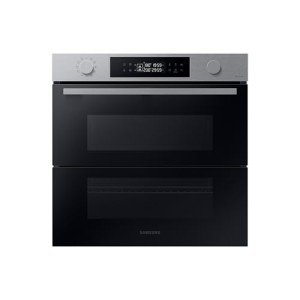The Future of Culinary Convenience: Integrated Ovens and Hobs
In the ever-evolving world of cooking area design, integrated ovens and hobs are at the forefront of modern-day culinary development. intergrated oven assure visual appeal but also improve functionality and effectiveness, changing how we prepare our meals. As homeowners progressively look for to create seamless, stylish, and easy to use cooking areas, the combination of ovens and hobs offers an ideal solution. This post explores what integrated ovens and hobs are, their advantages, and key factors to consider for those wanting to update their cooking area.
What Are Integrated Ovens and Hobs?

Integrated ovens and hobs are kitchen appliances effortlessly built into the kitchen cabinetry or counters, rather than standing apart as different entities. Integrated ovens are developed to mix into kitchen systems, offering a flush finish with surrounding cabinets. Similarly, integrated hobs are installed straight into the countertop, developing a streamlined appearance. This minimalist style approach not just raises the visual appeal of the cooking area however likewise takes full advantage of offered area.
Kinds Of Integrated Ovens
Single Ovens: These standalone systems are designed for simpleness and ease of use, featuring a single cooking chamber and several cooking modes such as baking, barbecuing, and roasting.
Double Ovens: Ideal for larger families or avid cooks, double ovens provide two independent cooking compartments, enabling multiple dishes to be ready concurrently at different temperature levels.
Combination Ovens: Blending conventional baking and steam cooking, mix ovens provide versatility for different cooking needs, retaining moisture while guaranteeing completely cooked meals.
Types of Integrated Hobs
Gas Hobs: These hobs permit precise temperature level control and instantaneous heat, making them a favorite amongst expert chefs and cooking enthusiasts.
Induction Hobs: Known for their performance and safety, induction hobs use electro-magnetic energy to heat pots and pans directly. They are quick to heat and cool off rapidly, minimizing the threat of burns.
Electric Hobs: Featuring smooth ceramic or glass surface areas, electric hobs are easy to tidy and supply an even heat circulation for a range of cooking styles.
Advantages of Integrated Ovens and Hobs
1. Space Optimization
With the pattern of smaller home and open-concept homes, integrated home appliances help make the most of cooking area space. By fitting seamlessly into kitchen cabinetry, cooking areas can appear larger and more open, decreasing clutter and enhancing visual appeal.
2. Aesthetic Appeal
Integrated ovens and hobs supply a streamlined, modern-day appearance that fits well within numerous design styles. The ability to personalize kitchen cabinetry ensures that property owners can attain a cohesive look that matches their style, whether modern, standard, or something in between.
3. Improved Functionality
Integrated devices typically feature sophisticated functions such as wise technology, self-cleaning alternatives, and numerous cooking modes. These enhancements not just enhance the cooking process but also boost functionality, making preparing a satisfying experience.
4. Security Features
Integrated hobs, especially induction models, are thought about much safer than standard cooking surfaces. They cool off rapidly, reducing the danger of burns, and often consist of features like kid locks and automated shut-off for additional safety.
Secret Considerations When Choosing Integrated Ovens and Hobs
1. Area and Layout
Before buying integrated devices, consider the space readily available in your cooking area. Measure the kitchen cabinetry and countertops thoroughly to make sure a best fit, permitting appropriate ventilation and installation area.
2. Cooking Needs
Evaluate your cooking practices and preferences. If you regularly entertain or cook big meals, a double oven might be the finest choice. Alternatively, if you're an occasional chef, a single oven might be sufficient. Similarly, picking in between gas, electric, or induction hobs will depend on your cooking style and convenience level.
3. Energy Efficiency
With increasing energy expenses and growing ecological issues, choosing for energy-efficient home appliances can conserve money in the long run. Search for items with high energy rankings and functions like programmable timers and eco-modes.
4. Quality and Brand
Investing in premium home appliances from trusted brands guarantees toughness and efficiency. Checking out consumer evaluations and looking for recommendations can help limit the best options customized to your needs.
Conclusion
Integrated ovens and hobs are more than just kitchen appliances; they represent a shift towards a more practical, stylish, and effective approach to cooking. As house owners focus on smooth style, benefit, and advanced functions, these integrated services will undoubtedly form the cooking areas of tomorrow. Whether remodeling a cooking area or developing a new one from scratch, integrating ovens and hobs is a financial investment that promises to enhance both culinary experiences and the total aesthetic of the home.
